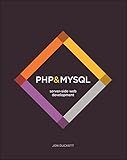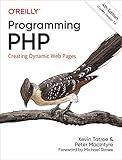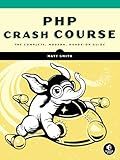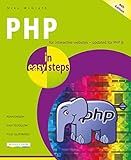Best PHP Books to Buy in November 2025

PHP & MySQL: Server-side Web Development



PHP and MySQL: The Comprehensive Guide to Server-Side Web Development with PHP 8 – Build Dynamic Websites with Database Integration, Security, and More (Rheinwerk Computing)



Programming PHP: Creating Dynamic Web Pages



PHP Crash Course: The Complete, Modern, Hands-On Guide



PHP in easy steps: Updated for PHP 8



Front-End Back-End Development with HTML, CSS, JavaScript, jQuery, PHP, and MySQL


In the fast-evolving world of web development, keeping up with changes is essential. As we step into 2025, Laravel continues to be a popular choice for developers due to its elegant syntax and robust feature set. Implementing authentication in a Laravel application ensures secure access and enhances user experience. In this guide, we will explore the key steps to effectively implement Laravel authentication in 2025.
Understanding Laravel Authentication
Laravel offers a versatile authentication system out of the box, allowing developers to authenticate users through multiple login methods such as web, API, and social networks. The built-in authentication system is both powerful and customizable, making it suitable for various application needs.
Steps to Implement Laravel Authentication
Step 1: Install Laravel
To start, ensure you have the latest version of Laravel installed. You can do this via Composer by running:
composer create-project --prefer-dist laravel/laravel blog
Step 2: Configure Database and Migrations
Set up your database by configuring your .env file. Update the database connection settings to ensure Laravel can establish a connection:
DB_CONNECTION=mysql
DB_HOST=127.0.0.1
DB_PORT=3306
DB_DATABASE=your_database_name
DB_USERNAME=your_database_username
DB_PASSWORD=your_database_password
After configuration, run the migrations to create the necessary tables for storing user data:
php artisan migrate
Step 3: Utilize Laravel Breeze or Jetstream
Laravel Breeze and Jetstream are wonderful starter kits for implementing authentication. Depending on your preferences, you can choose either:
Laravel Breeze:
composer require laravel/breeze --dev
php artisan breeze:install
npm install && npm run dev
php artisan migrate
Laravel Jetstream:
composer require laravel/jetstream
php artisan jetstream:install livewire
npm install && npm run dev
php artisan migrate
Step 4: Customize Authentication Logic
Once installed, you can adjust the authentication components to fit your application needs. This might involve adding custom login or registration fields, altering password reset functionality, or integrating third-party authentication providers.
Step 5: Handling Caching and Middleware
Laravel’s robust caching system can improve application performance but might introduce complexities during authentication. Properly handling and preventing caching issues ensures that your authentication sessions remain secure and up to date.
Step 6: Implementing Role-Based Access
Add role-based access controls for advanced user permissions. This can be achieved by creating middleware to restrict access based on user roles:
php artisan make:middleware CheckRole
Within your middleware, implement the logic for role verification, ensuring users have appropriate access.
Enhancing Authentication with Laravel Features
When Statements
Efficiently manage conditional logic in your application using Laravel's when statements. These statements streamline conditions and clean up your codebase, leading to a more maintainable application.
Sending Emails with Attachments
Another advantageous feature for user interaction is sending emails with attachments. For instance, you might need to send PDFs via email after user registration or transaction notifications. Refer to this guide on sending emails with PDF attachments for implementation details.
Choosing the Right PHP Book for Deeper Understanding
To gain a deeper understanding of PHP and Laravel, investing in a comprehensive PHP book is beneficial. When choosing a book, consider factors such as the author's expertise, reviews, and how current the content is with PHP's latest features. Books that offer practical examples and cover Laravel's advanced capabilities can greatly enhance your learning experience.
Conclusion
Implementing authentication in Laravel in 2025 requires understanding the framework’s built-in tools, customizing user access, and staying informed about Laravel’s latest features. By following the steps outlined in this guide and utilizing Laravel's rich ecosystem, developers can create secure and robust applications suited for modern needs.
For more insights into optimizing your Laravel applications, consider exploring official Laravel documentation and community forums to stay updated with best practices and innovations.
